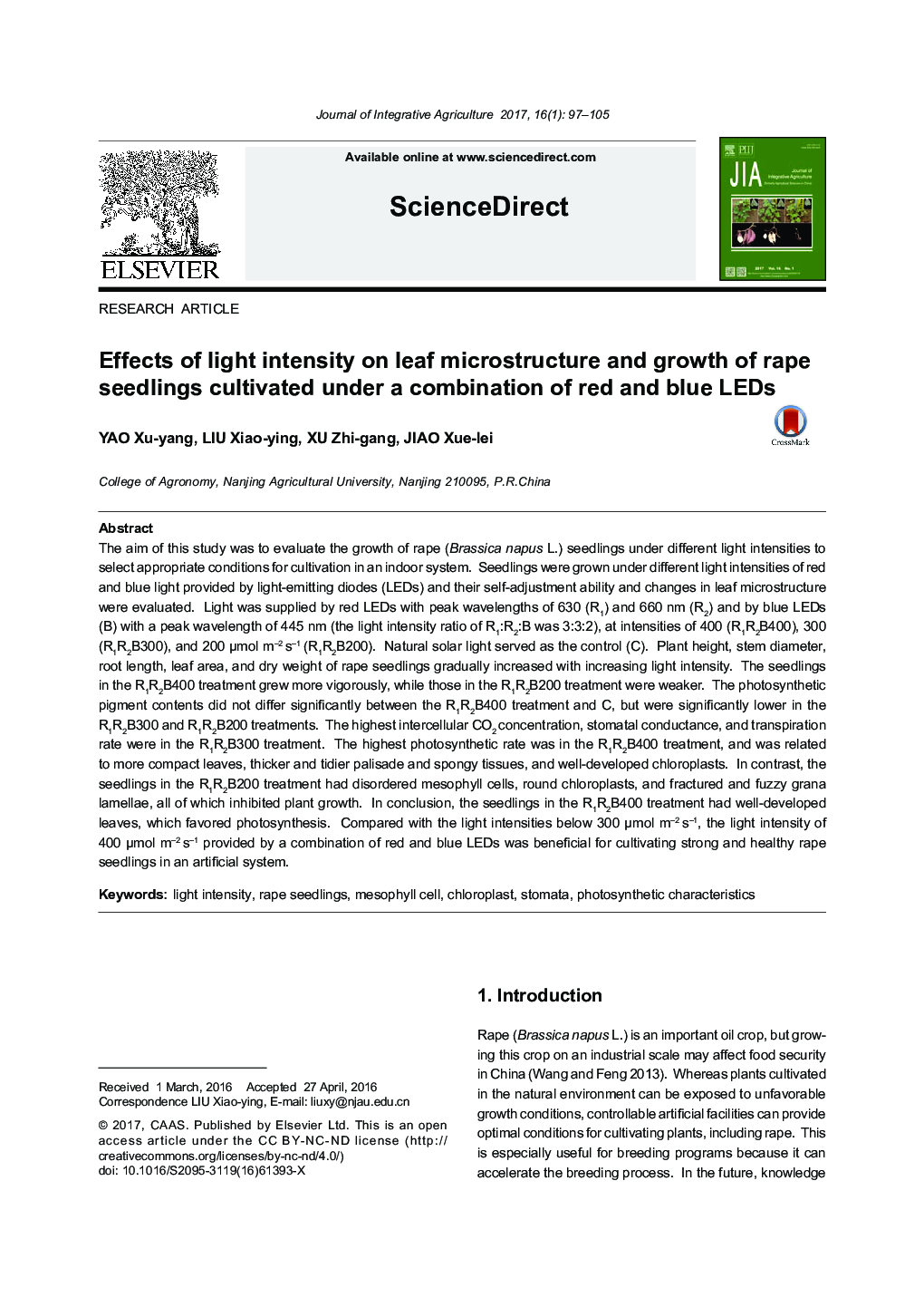| کد مقاله | کد نشریه | سال انتشار | مقاله انگلیسی | نسخه تمام متن |
|---|---|---|---|---|
| 8876140 | 1623713 | 2017 | 9 صفحه PDF | دانلود رایگان |
عنوان انگلیسی مقاله ISI
Effects of light intensity on leaf microstructure and growth of rape seedlings cultivated under a combination of red and blue LEDs
دانلود مقاله + سفارش ترجمه
دانلود مقاله ISI انگلیسی
رایگان برای ایرانیان
کلمات کلیدی
موضوعات مرتبط
علوم زیستی و بیوفناوری
علوم کشاورزی و بیولوژیک
علوم کشاورزی و بیولوژیک (عمومی)
پیش نمایش صفحه اول مقاله

چکیده انگلیسی
The aim of this study was to evaluate the growth of rape (Brassica napus L.) seedlings under different light intensities to select appropriate conditions for cultivation in an indoor system. Seedlings were grown under different light intensities of red and blue light provided by light-emitting diodes (LEDs) and their self-adjustment ability and changes in leaf microstructure were evaluated. Light was supplied by red LEDs with peak wavelengths of 630 (R1) and 660 nm (R2) and by blue LEDs (B) with a peak wavelength of 445 nm (the light intensity ratio of R1:R2:B was 3:3:2), at intensities of 400 (R1R2B400), 300 (R1R2B300), and 200 μmol mâ2 sâ1 (R1R2B200). Natural solar light served as the control (C). Plant height, stem diameter, root length, leaf area, and dry weight of rape seedlings gradually increased with increasing light intensity. The seedlings in the R1R2B400 treatment grew more vigorously, while those in the R1R2B200 treatment were weaker. The photosynthetic pigment contents did not differ significantly between the R1R2B400 treatment and C, but were significantly lower in the R1R2B300 and R1R2B200 treatments. The highest intercellular CO2 concentration, stomatal conductance, and transpiration rate were in the R1R2B300 treatment. The highest photosynthetic rate was in the R1R2B400 treatment, and was related to more compact leaves, thicker and tidier palisade and spongy tissues, and well-developed chloroplasts. In contrast, the seedlings in the R1R2B200 treatment had disordered mesophyll cells, round chloroplasts, and fractured and fuzzy grana lamellae, all of which inhibited plant growth. In conclusion, the seedlings in the R1R2B400 treatment had well-developed leaves, which favored photosynthesis. Compared with the light intensities below 300 μmol mâ2 sâ1, the light intensity of 400 μmol mâ2 sâ1 provided by a combination of red and blue LEDs was beneficial for cultivating strong and healthy rape seedlings in an artificial system.
ناشر
Database: Elsevier - ScienceDirect (ساینس دایرکت)
Journal: Journal of Integrative Agriculture - Volume 16, Issue 1, January 2017, Pages 97-105
Journal: Journal of Integrative Agriculture - Volume 16, Issue 1, January 2017, Pages 97-105
نویسندگان
Xu-yang YAO, Xiao-ying LIU, Zhi-gang XU, Xue-lei JIAO,